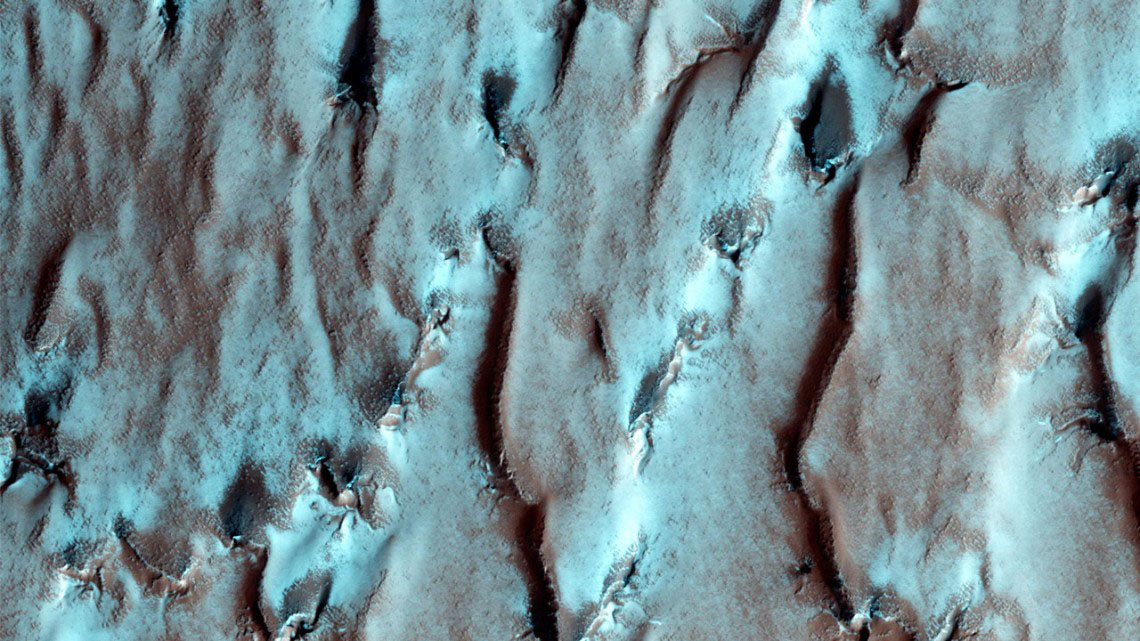| Sep 26, 2022 |
Layering, not liquid: Astronomers explain Mars' watery reflections
|
|
(Nanowerk News) Cornell astronomers believe bright reflections beneath the surface of Mars’ South Pole are not necessarily evidence of liquid water, but instead geological layers.
|
|
The researchers detail their alternative explanation in Nature Astronomy ("Explaining Bright Radar Reflections Below The South Pole of Mars Without Liquid Water").
|
|
“On Earth, reflections that bright are often an indication of liquid water, even buried lakes like Lake Vostok,” said Dan Lalich, research associate. “But on Mars, the prevailing opinion was that it should be too cold for similar lakes to form.”
|
|
But the fact remains, Lalich said, that the bright reflection exists and requires an explanation.
|
 |
| This image from NASA’s Mars Reconnaissance Orbiter shows the edge of the Martian South Pole Layered Deposit. The stack of fine layering is highlighted by the rays of the polar sun. (Image: NASA, JPL-Caltech, University of Arizona)
|
|
Lalich created simulations with layers composed of four materials – atmosphere, water ice, carbon dioxide (CO2) ice and basalt – and assigned each layer a corresponding permittivity, an intrinsic property of the material describing its interaction with electromagnetic radiation passing through it.
|
|
Simulations using three layers – two CO2 layers, separated by a layer of dusty ice – produced reflections as bright as the actual observations.
|
|
“I used CO2 layers embedded within the water ice because we know it already exists in large quantities near the surface of the ice cap,” Lalich said. “In principle, though, I could have used rock layers or even particularly dusty water ice and I would have gotten similar results. The point of this paper is really that the composition of the basal layers is less important than the layer thicknesses and separations.”
|
|
From the models, the researchers determined that the thickness of the layers and how far apart they are have a bigger impact on reflection power than the composition of the layers. While no single simplified stratigraphy in the paper can explain every observation, the researchers wrote, “we have shown that it is possible to create bright reflections without liquid water.”
|
|
It’s important to figure out what’s not liquid water on Mars, Lalich said, because the stakes are so high. “If there is liquid water,” he said, “maybe there’s life, or maybe we could use it for future human missions to Mars.”
|
|
Liquid water could also have important implications for the age of the polar cap, the internal heating of Mars, and how the planet’s climate has evolved in the geologically recent past – and Lalich does not rule it out entirely.
|
|
“None of the work we’ve done disproves the possible existence of liquid water down there,” Lalich said. “We just think the interference hypothesis is more consistent with other observations. I’m not sure anything short of a drill could prove either side of this debate definitively right or wrong.”
|

